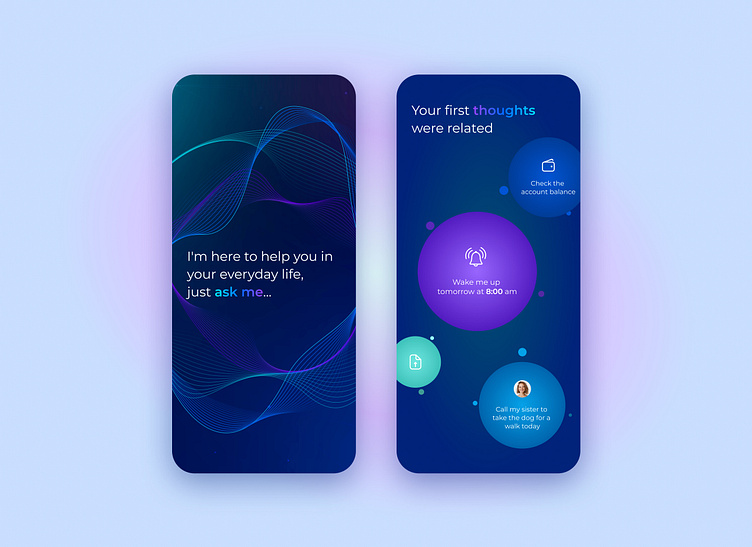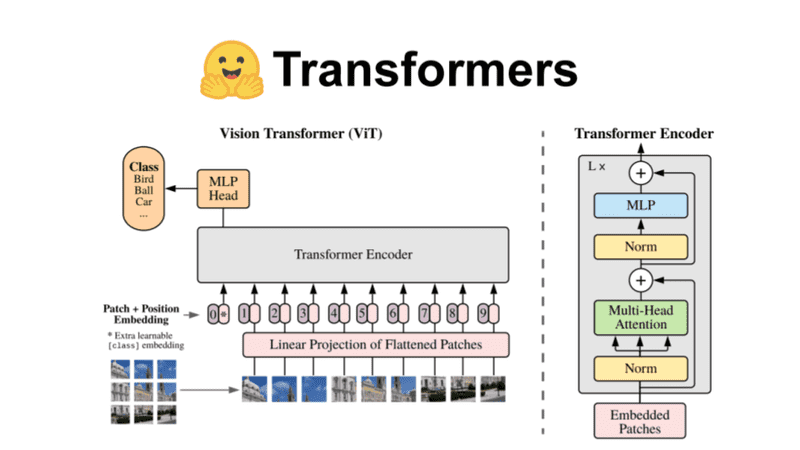
Unlocking Autonomous AI: A Deep Dive into Hugging Face Transformers Agents
The landscape of artificial intelligence is rapidly evolving from single-purpose models to sophisticated, autonomous systems capable of reasoning, planning, and executing complex, multi-step tasks. In a significant development for developers and researchers, the Hugging Face team has introduced an experimental new feature directly into its flagship library: Transformers Agents. This powerful addition provides a streamlined and intuitive framework for building AI agents that can leverage the vast ecosystem of models on the Hugging Face Hub as a dynamic set of tools.
An AI agent, in this context, is a system powered by a Large Language Model (LLM) that acts as a “brain” or a reasoning engine. Instead of just generating text, this LLM can access and utilize a collection of specialized “tools” to interact with the world, process information, and accomplish goals. This could involve anything from generating an image and then describing it, to analyzing a document, fetching live data from an API, and synthesizing a report. This article provides a comprehensive technical guide to understanding, implementing, and mastering Hugging Face Transformers Agents, complete with practical code examples and best practices. This latest entry in Hugging Face Transformers News is a game-changer for building practical, multi-modal AI applications.
Core Concepts: How Transformers Agents Work
At its heart, the Transformers Agent framework is built on a simple yet powerful idea: using an LLM as a natural language controller to orchestrate a series of tools. The entire process is designed to be highly intuitive, mirroring how a human might break down a complex request into smaller, manageable steps.
The Agent-Tool Architecture
The system consists of two primary components:
- The Agent (The “Brain”): This is an LLM responsible for reasoning. When given a prompt, it doesn’t just answer directly; it analyzes the request, determines the sequence of steps needed, and identifies the appropriate tools to use. It then generates the Python code required to execute those tools with the correct parameters. This approach is heavily influenced by the ReAct (Reason, Act) paradigm.
- The Toolbox (The “Hands”): This is a collection of functions or models that the agent can call upon. Hugging Face provides a rich default set of tools that map directly to popular tasks and models on the Hub, such as image generation (using models from Stability AI News), text-to-speech, document question-answering, and more. The true power, however, lies in the ability to create and add custom tools.
A Simple “Hello, World” Example
To get started, you first need to install the necessary libraries. The agent functionality relies on specific dependencies, including the full `transformers` library and tools for specific tasks.
# Install the latest transformers library and dependencies for agents
pip install -U "transformers[agents]"Once installed, creating and running your first agent is remarkably straightforward. Let’s ask an agent to perform a classic multi-modal task: generating an image and then creating a caption for it.
from transformers.agents import HfAgent
# Instantiate the agent. By default, it uses a powerful open-source model.
# You might be prompted to install specific libraries like diffusers on first run.
agent = HfAgent("https://api-inference.huggingface.co/models/bigcode/starcoder")
# Give the agent a complex, multi-step prompt
prompt = "Generate an image of a corgi wearing a superhero cape. Then, create a caption for this image."
# Run the agent and observe the output
result = agent.run(prompt)
print(f"Final Result: {result}")Behind the scenes, the agent first identifies the need for an image generation tool. It generates the code to call that tool, executes it, and saves the image. Then, it observes the result (the image path) and uses an image-captioning tool to generate the descriptive text, returning it as the final output. This seamless integration of models from different domains, whether built with PyTorch News or TensorFlow News, is a core strength of this framework.
Implementation and Customization Deep Dive

While the default agent is powerful, real-world applications require customization. This involves selecting the optimal LLM for your task and, most importantly, equipping the agent with custom tools to perform specialized actions.
Choosing Your Agent’s “Brain”
The default `starcoder` model is a great starting point, but you can easily swap it out for other LLMs. This flexibility allows you to balance performance, cost, and specific capabilities. You can use open-source models from the Hub or connect to proprietary API endpoints from providers like OpenAI, Cohere, or Anthropic.
Here’s how you can configure the agent to use an OpenAI model, which requires setting up your API key as an environment variable (`OPENAI_API_KEY`).
import os
from transformers.agents import OpenAiAgent
# Ensure your OpenAI API key is set as an environment variable
# os.environ["OPENAI_API_KEY"] = "your-api-key-here"
# Check if the key is available
if "OPENAI_API_KEY" not in os.environ:
print("Please set your OPENAI_API_KEY environment variable.")
else:
# Instantiate the agent with a specific OpenAI model
# This taps into the latest from OpenAI News
agent = OpenAiAgent(model="gpt-4-turbo", api_key=os.environ["OPENAI_API_KEY"])
# Let's try a more complex reasoning task
response = agent.run("Summarize the main plot points of 'The Great Gatsby' in three bullet points.")
print(response)This ability to switch LLMs is crucial for production systems, where you might prototype with a powerful model like GPT-4 and later optimize for cost by using a fine-tuned open-source model from sources like Mistral AI News or Meta AI News, perhaps served efficiently with tools like vLLM News or on platforms like AWS SageMaker.
Creating and Using Custom Tools
The most powerful feature of Transformers Agents is the ability to define your own tools. A custom tool is simply a Python function with a detailed docstring and type hints. The agent’s LLM parses this docstring to understand what the tool does, what its inputs are, and what it returns. This is where you can integrate any custom logic, from internal database lookups to external API calls.
Let’s create a simple tool to fetch the current price of a cryptocurrency using the CoinGecko API.
import requests
from transformers.tools import Tool
from transformers.agents import HfAgent
# Define a custom tool by creating a class that inherits from Tool
class CryptoPriceTool(Tool):
name = "crypto_price_fetcher"
description = "This tool fetches the current price of a given cryptocurrency in USD."
# Define the expected inputs with type hints and descriptions in the docstring
inputs = {
"crypto_id": {
"type": "string",
"description": "The ID of the cryptocurrency (e.g., 'bitcoin', 'ethereum').",
}
}
# Define the output type
output_type = "string"
def __call__(self, crypto_id: str):
"""Fetches the price from the CoinGecko API."""
try:
url = f"https://api.coingecko.com/api/v3/simple/price?ids={crypto_id}&vs_currencies=usd"
response = requests.get(url)
response.raise_for_status() # Raise an exception for bad status codes
data = response.json()
price = data[crypto_id]['usd']
return f"The current price of {crypto_id} is ${price} USD."
except requests.exceptions.RequestException as e:
return f"Error fetching data: {e}"
except KeyError:
return f"Could not find price for '{crypto_id}'. Please use a valid ID."
# Instantiate the agent and pass our custom tool in a list
agent = HfAgent(
"https://api-inference.huggingface.co/models/bigcode/starcoder",
additional_tools=[CryptoPriceTool()]
)
# Now, the agent can use our new tool
price_info = agent.run("What is the current price of bitcoin?")
print(price_info)This example demonstrates how easy it is to extend the agent’s capabilities. You could create tools to query a vector database like Pinecone News or Chroma News for RAG, interact with a CRM, or even trigger CI/CD pipelines, transforming the agent into a powerful automation engine.
Advanced Techniques and Real-World Applications
With the fundamentals in place, we can explore more advanced use cases that combine multiple tools and integrate with other platforms, pushing the boundaries of what’s possible with autonomous agents.
Building a Multi-Modal Research Assistant

Let’s design an agent that can perform a more complex, multi-modal task. Imagine you have a chart in an image file and you want the agent to analyze it, summarize the findings, and generate an audio report. This requires chaining an image-to-text model, a summarization model, and a text-to-speech model.
from transformers.agents import HfAgent
from PIL import Image
import requests
# Let's assume we have an image of a chart. We'll download one for this example.
url = "https://www.weforum.org/agenda/2022/09/this-chart-shows-the-extraordinary-growth-of-solar-power/image/large_2x/solar-power-growth-chart-2022.png"
chart_image = Image.open(requests.get(url, stream=True).raw).convert("RGB")
image_path = "solar_chart.png"
chart_image.save(image_path)
# Instantiate the agent
agent = HfAgent("https://api-inference.huggingface.co/models/HuggingFaceH4/starchat-beta")
# Create a prompt that requires multiple steps and tool uses
# This demonstrates the agent's ability to orchestrate a complex workflow
prompt = f"""
First, describe what you see in the image located at '{image_path}'.
Then, based on your description, summarize the main trend shown in the chart.
Finally, convert this summary into an audio file.
"""
# The agent will use an image-captioning tool, a text-generation tool for summarization,
# and a text-to-speech tool to complete the task.
audio_result = agent.run(prompt)
print(f"Audio report generated and saved to: {audio_result}")
# You can now play the audio file saved at the path returned by the agent.
# This showcases a powerful workflow relevant to many in the Kaggle News and data science communities.
This example highlights the agent’s ability to act as an orchestrator, seamlessly passing the output of one tool as the input to the next. This is a significant step towards creating autonomous systems for data analysis and reporting. Building a user interface with Gradio News or Streamlit News on top of this logic could create a fully interactive application.
Comparison with Other Agentic Frameworks
It’s useful to understand how Transformers Agents compare to other popular frameworks like LangChain and LlamaIndex.
- Hugging Face Transformers Agents: Their primary strength is simplicity and deep, native integration with the Hugging Face Hub. It’s an “in-the-box” solution for anyone already working within the `transformers` ecosystem. It’s ideal for quickly building agents that leverage Hub models as tools.
- LangChain News & LlamaIndex News: These are more mature, feature-rich orchestration frameworks. They offer more complex constructs like sophisticated memory management, elaborate chains, and a vast library of third-party integrations (vector stores, APIs, etc.). They are better suited for building highly complex, stateful applications with long-running conversations.
Best Practices and Optimization
To move from experimental scripts to production-ready applications, it’s essential to follow best practices for tool design, performance, and debugging.

Best Practices for Tool Design
- Crystal-Clear Docstrings: The LLM’s understanding of your tool is only as good as its docstring. Be explicit. Describe what the tool does, its parameters (with type hints), and what it returns. Use clear, unambiguous language.
- Atomic and Idempotent Tools: Design tools to perform one specific task well. Avoid creating monolithic functions that do too many things. Whenever possible, make tools idempotent, meaning calling them multiple times with the same input produces the same result.
- Robust Error Handling: Implement `try…except` blocks within your tools to catch potential errors (e.g., API failures, invalid inputs) and return informative error messages to the agent. This helps the agent understand what went wrong and potentially self-correct.
Performance and Cost Considerations
Running agents involves costs in terms of both latency and computation.
- Model Selection: Using a large, proprietary model like those from OpenAI News or Anthropic News provides top-tier reasoning but can be slow and expensive. For many tasks, a smaller, fine-tuned open-source model hosted on your own infrastructure (e.g., using Azure Machine Learning News or Replicate News) can provide a much better balance of performance and cost.
- Inference Optimization: If your tools rely on local models, optimize their inference speed. Use libraries like ONNX News, OpenVINO News, or leverage NVIDIA’s TensorRT News for GPU acceleration. For LLMs, servers like vLLM can dramatically increase throughput.
- Tool Execution Cost: Remember that the cost isn’t just from the LLM. If a tool triggers a heavy computation (like training a model or running a complex simulation), that cost must be factored in. Using experiment tracking tools like MLflow News or Weights & Biases News can help monitor and log these executions.
Debugging with `run(…, remote=True)`
Debugging an agent can be tricky because its behavior is non-deterministic. A key technique is to inspect the agent’s “thought process.” By default, the agent executes code locally. However, for security and sandboxing, you can run it in a remote, isolated environment by setting `remote=True`. This also provides a more verbose output of the code the agent is generating and executing, which is invaluable for understanding why it’s making certain decisions or failing on a task.
Conclusion: The Future of Autonomous AI is Here
Hugging Face Transformers Agents represent a significant and exciting step forward in making autonomous AI more accessible to developers. By integrating agentic capabilities directly into the `transformers` library, they have lowered the barrier to entry for building sophisticated applications that can reason, plan, and act. The core strengths of this framework—its simplicity, deep integration with the Hugging Face Hub’s thousands of models, and the extensibility of custom tools—provide a powerful foundation for innovation.
As this experimental feature matures, we can expect to see even more advanced capabilities, such as improved reasoning, better error correction, and more seamless tool discovery. The key takeaway for developers is clear: the era of single-call models is giving way to a new paradigm of orchestrated, tool-using AI. We encourage you to dive in, experiment with the code examples, build your own custom tools, and start exploring the vast potential of autonomous agents in your own projects. The journey has just begun.



